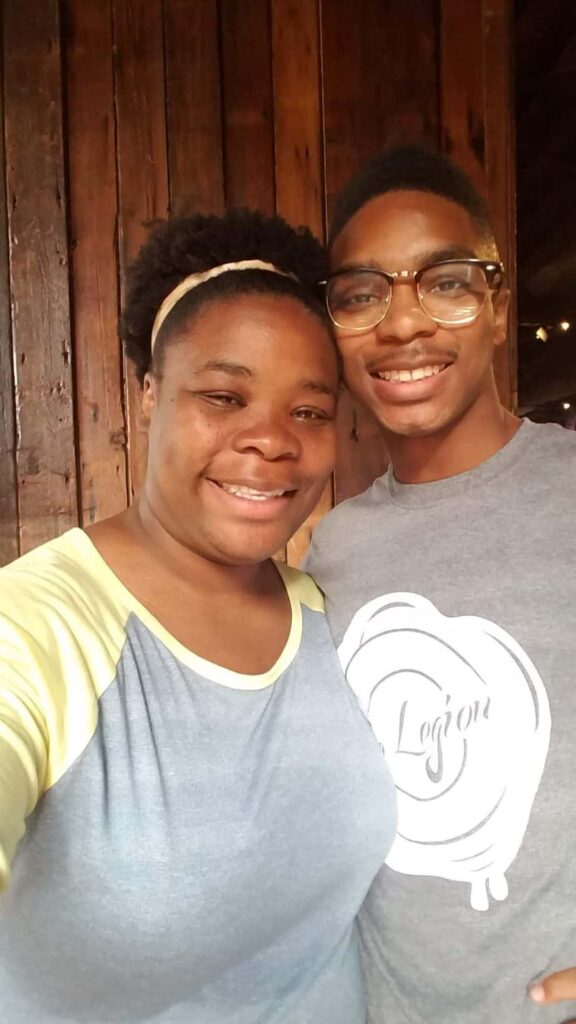Two years ago, my husband and I started a journey with our oldest son. We packed him up to attend his freshman year in college, but not without having some pretty transparent conversations with him before ‘letting go.’ As with most parents, we talked about safe sex, alcohol safety, and communicable diseases with the guidance of our pediatrician. One of those diseases happened to be Meningitis. How much do you know about it?

This post is sponsored by GSK.
For reference, here are a few things about meningitis that you may not know. It’s a good starting spot to know what the statistics are. While I am not a doctor, I do encourage you to have a conversation with your teen’s medical provider because, in my opinion, this is too important to ignore.
Meningococcal disease, known as meningitis, is an uncommon, but serious illness that can cause life-threatening complications or even death.i There are five vaccine-preventable serogroups: A, C, W, Y and B.ii iii
- Up to 1 in 5 meningitis survivors suffer long-term consequences, such as brain damage, amputations, hearing loss and nervous system problems.iv
- Among those who contract meningitis, 1 in 10 will die, despite treatment, sometimes in as little as 24 hours.v
- Early symptoms of meningitis may be similar to those of the flu, but can progress quickly and can be fatal, sometimes within 24 hours.3,vi
Young adults could be at risk:
- Teens and young adults are at an increased risk for contracting meningitis because it can spread through certain common behaviors such as living in close quarters like college dormitories, coughing, sneezing, kissing, and sharing drinks, utensils, or smoking devices.1,vii
- While meningococcal disease is uncommon, studies have shown that between 2014-2017, the relative risk of contracting MenB was 3.5 to 5 times higher in college students aged 18-24 years compared with peers not attending college.viii,ix, 12
- Even though MenB vaccination has been available since 2014, recent CDC data show that only about one in five 17-year-olds in the US received at least one dose of MenB vaccination in 2019.x
- From 2011 through March 2019, meningitis B caused all US college meningococcal outbreaks, which involved 13 campuses, 50 cases, and 2 deaths among an at-risk population of approximately 253,000 students.6
There are a couple of things that we didn’t have to worry about with any of our children. We don’t share drinks or utensils with other people. We almost never do it in our home, and while that may be weird to others, it’s just how we roll. If you ARE open with sharing drinks or utensils with your family members, you may want to have that conversation with your adolescent or young adult kids about not doing it with people outside of the home, and the fact that it is a behavior that can cause meningitis to spread.5 Now, kissing is another story altogether, right? I know what my husband and I were doing in college, and telling my son not to kiss anyone is kind of pointless. So, instead we talk about how to help protect yourself even with this seemingly simple show of affection. I’ve often stated in throw away comments that college students are living their best dumb lives, but not always the best choice making going on.

We also asked our healthcare provider to talk with him at length about meningitis during his physical before heading off to college. She graciously agreed, and they discussed it in terms that he could understand, and with a bit more medical jargon than I’m equipped to give. I trust her and the care that she gives to my children, which is why we went ahead and confirmed he was up-to-date with meningitis vaccination.
If you’ve been here any length of time, you already know that I’ve lost two of my siblings - not to meningitis - so I tend to take care to do what I can to help protect my children. I know that I can’t prevent the inevitable, but if I can arm myself and my children with the knowledge that they need to help protect themselves, I’m going to do it. This isn’t just a conversation you should start with children on their way to college though. These discussions can be started with pediatricians early, so they can get you to a place of understanding and will know that they have the support of you and any other adult in helping to vaccinate your adolescent/young adult children against meningitis. While there are many adults who don’t realize that there are two different types of vaccines needed to help protect against the most common types of vaccine-preventable meningitis, that’s not a good enough reason to not do so. Talking to your child’s doctor about the two vaccines available to help protect teens/young adults against the five vaccine-preventable groups of meningitis – A, C, W, Y, and B – and all CDC-recommended vaccines2,3 needed before 2021 starts will put you ahead of the curve, and could possibly help another parent if you share this information. Note, that vaccination may not protect all recipients.
Being a parent of a college-age student brings so many emotions. Lack of knowledge about a vaccine-preventable disease shouldn’t be one of them.
More Info on Meningitis
For more information on meningitis, you can visit www.meningitisb.com.
1 Manual for the Surveillance of Vaccine-Preventable Diseases: Chapter 8: Meningococcal Disease. Centers for Disease Control and Prevention website. https://www.cdc.gov/vaccines/pubs/surv-manual/chpt08-mening.html. Reviewed December 2019. Accessed November 2020.
2 Vaccine Information Statements (VISs): Meningococcal ACWY VIS. Centers for Disease Control and Prevention website. https://www.cdc.gov/vaccines/hcp/vis/vis-statements/mening.html. Updated August 2019. Accessed November 2020. 3Vaccine Information Statements (VISs): Meningococcal ACWY VIS. Centers for Disease Control and Prevention website. https://www.cdc.gov/vaccines/hcp/vis/vis-statements/mening.html. Updated August 2019. Accessed November 2020.
3 Vaccine Information Statements (VISs): Meningococcal B VIS. Centers for Disease Control and Prevention website. https://www.cdc.gov/vaccines/hcp/vis/vis-statements/mening-serogroup.html. Updated August 2019. Accessed November 2020.
4 Meningococcal Disease: Clinical Information. Centers for Disease Control and Prevention website. https://www.cdc.gov/meningococcal/clinical-info.html. Reviewed May 31, 2019. Accessed November 2020.
5 Pelton SI. Meningococcal disease awareness: clinical and epidemiological factors affecting prevention and management in adolescents. J Adolesc Health. 2010;46:S9-S15
6 Meningococcal Disease: Signs and Symptoms. Centers for Disease Control and Prevention website. https://www.cdc.gov/meningococcal/about/symptoms.html. Updated June 2017. Accessed November 2020.
7 Meningitis. Overview. Mayo Clinic website. https://www.mayoclinic.org/diseases-conditions/meningitis/symptoms-causes/syc-20350508. Updated October 1, 2020. Accessed November 2020.
8 Gary S Marshall, Amanda F Dempsey, Amit Srivastava, Raul E Isturiz, US College Students Are at Increased Risk for Serogroup B Meningococcal Disease, Journal of the Pediatric Infectious Diseases Society,piz024, https://doi.org/10.1093/jpids/piz024
9 Sarah A. Mbaeyi, Sandeep J. Joseph, et al. Meningococcal Disease Among College-Aged Young Adults: 2014-2016. Pediatrics. 2019; 143. 10 National, Regional, State, and Selected Local Area Vaccination Coverage Among Adolescents Aged 13–17 Years — United States, 2019. 2020; 69(33). Morbidity and Mortality Weekly Report. https://www.cdc.gov/mmwr/volumes/69/wr/pdfs/mm6933-H.pdf. Reviewed August 21, 2020. Accessed November 2020.

